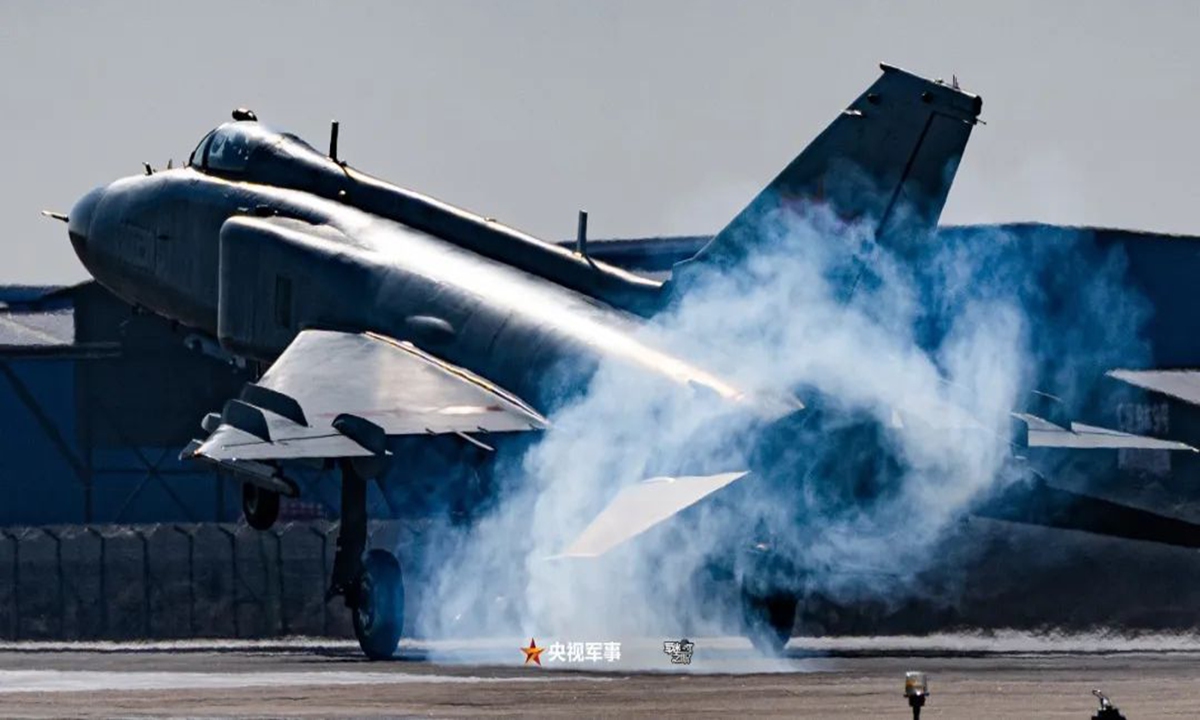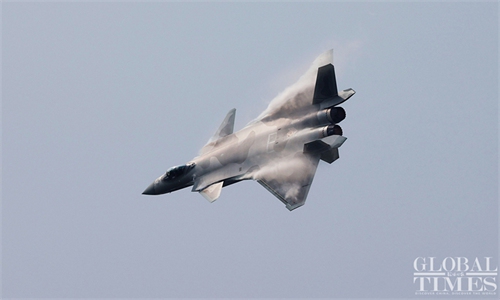China's J-8 fighter jet can still make a difference despite nearing retirement: pilot

A J-8II fighter jet lands after a training exercise in early 2023. Photo: Screenshot from China Central Television
The J-8, a type of legacy fighter jet domestically developed by China, is still playing a surprise role in the Chinese People's Liberation Army (PLA) although it is close to its eventual retirement, a pilot said recently, citing the aircraft's integration into the PLA's comprehensive combat system.
Chen Lu, a pilot affiliated with an aviation regiment of the PLA Northern Theater Command Air Force who has flown the J-8 for more than a decade, made the remarks in a China Central Television (CCTV) program on Sunday.
The J-8 Chen referred to is the J-8II, a significantly improved version of the original J-8. During the initial stages of its design, the goal was to develop a high-altitude, high-speed aircraft, so its high-altitude performance is excellent, Chen said.
From today's perspective, the J-8 has become an outdated aircraft, and many younger pilots are looking to fly more advanced fighter jets like the J-16 and the J-20, but Chen still prefers the J-8, because he knows the aircraft well after so many years of partnership, he said.
The J-8 can make surprise moves at altitudes of more than 10,000 meters and lead to victory by contributing to the comprehensive combat system, Chen said.
The J-8II was developed to be a high-altitude, high-speed interceptor and an air superiority fighter, but under the new combat requirements in the 21st century, its original roles are being replaced by more advanced fighter jets, meaning that the J-8II is close to fulfilling its duties, Wei Dongxu, a Beijing-based military expert, told the Global Times on Sunday.
Before its full retirement, the J-8II has another role, being transformed from a fighter to a scout. It can be equipped with reconnaissance pods and carry out air-to-ground tactical reconnaissance missions taking advantage of its high-altitude capabilities, Wei said.
The CCTV program on the J-8 was produced to pay tribute to Wang Wei, a PLA Navy pilot who sacrificed his life on April 1, 2001 when intercepting a US EP-3 signals intelligence aircraft above China's exclusive economic zone southeast of Hainan Island with a J-8II, crashing after colliding with the US spy plane, which was conducting close-in reconnaissance in the South China Sea.
"History is moving forward, and while the age of the J-8 is ending, the flag it waved will not fall with it. On the contrary, younger generations will carry it on," Chen said.
The upcoming full retirement of the J-8II is also a reflection of China's rapid development in the aviation industry, as it now has a large number of J-20 stealth fighter jets and the J-16 multirole fighter jets, surpassing the J-8II in all aspects, Wei said.
As more powerful guardians of the sky, they can better safeguard the country, marking China's aviation force has entered a new era, Wei said.


